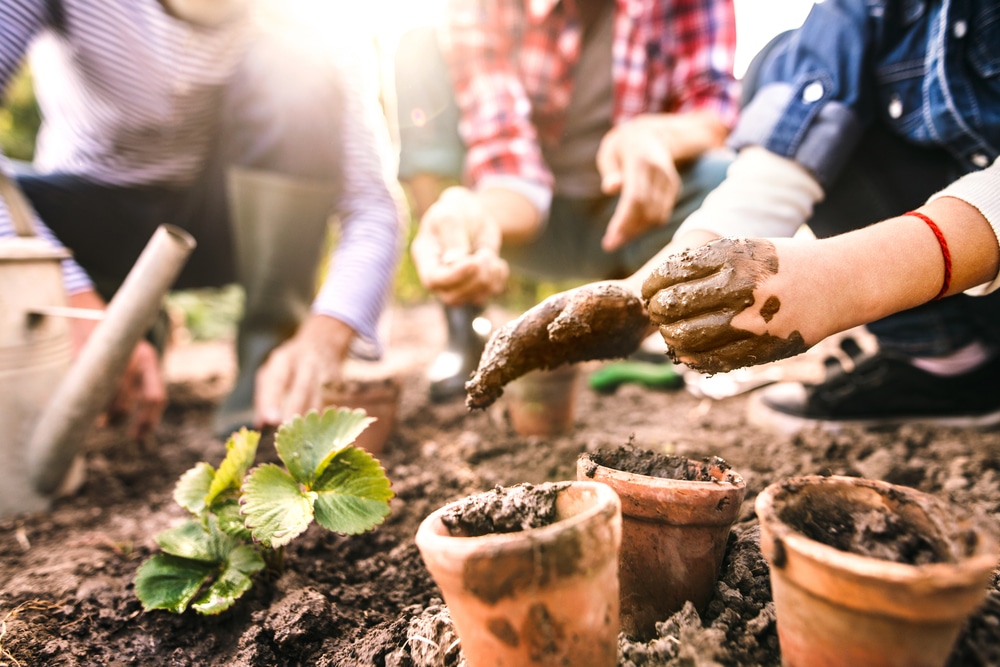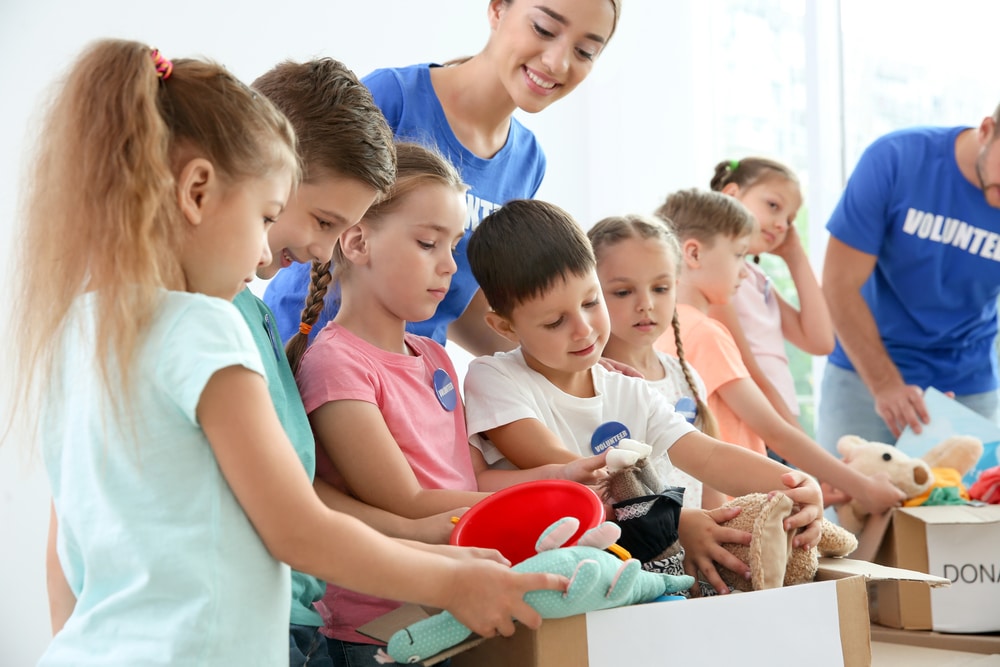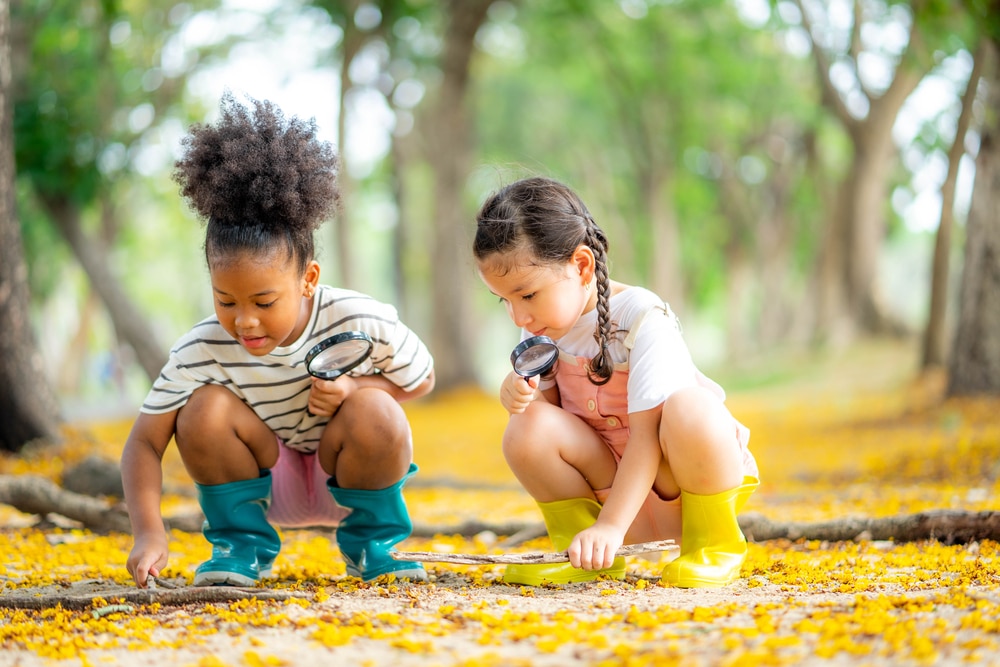7 ways children can help save the planet
National Earth Day is occurring on the 22nd of April. The theme for this year is invest in our planet. It is important to lead by example and show your pupils how they can get involved to help save the planet. Thinking about activities that children can get involved in to help with the environment can be difficult. To help, we have curated 7 ways children can help save the planet.
1. Walk or cycle to school
Encourage children to walk or cycle to school if they are able to do so. This is a key activity that children can easily do with their parents or guardians. Educate your pupils on the importance of not relying on cars to commute. If this is not possible for some pupils, give other examples of when they can walk or cycle, such as going to the local park.
Teach children about carbon footprint and how driving can contribute to traffic congestion, air pollution, and noise pollution. Create a competition within your class to reduce the class’s carbon footprint. Have a chart with all the pupils listed and put a sticker each day when a child has walked somewhere instead of being driven. At the end of the week, the child with the most stickers gets a small prize. This will make your class want to participate, and they will be eager to walk or cycle more to save the planet.
2. Garden with the class
Make time in your school day to go outside and plant trees, flowers or various plants together. This allows children to learn about the environment and how to save the planet. Through gardening, pupils can learn about water and energy cycles, the needs of insects and the food chain, as well as the importance of plants, flowers and trees to the ecosystem. Pair a science lesson with the gardening activity to cover multiple areas, including protecting Earth.
Gardens represent a natural environment and encourages insects to flourish. Tell your pupils that they are helping to provide oxygen by planting so they understand how gardening can help save the planet.
Another benefit of gardening for children is that it helps lower stress levels and lifts children’s moods. Being out in the fresh air is perfect for taking a break from the classroom too.

3. Reduce, Reuse, Recycle
Another simple way children can save the planet is by using the reduce, reuse and recycle method. Set examples of this in class that they can transfer over at home and allow children to take control of this. Set up two bins, one for general rubbish and one for recycling. Explain to your pupils the difference between each bin and create a sign to tell which one is which. Let the children decide what goes into the recycling bin once they are done with something. If they are wrong, correct them and allow them to put it into the right bin.
Encourage children to use both sides of paper rather than throwing it away once one side is used. This will tick off the reduce and reuse aspects. Get this into their routines in class so that it comes naturally to them. They will take charge of their actions and feel better as they are contributing positively to the environment.
4. Let children take the lead with switching appliances off
Make sure that your class switch off any electrical appliances after using them, such as computers. This can become a routine for the children, so they take control of their energy use. Doing this will save energy and create less pollution. Your pupils will be able to transfer this into their everyday lives outside of the classroom, reducing their environmental impact. They will also know the positive contribution of small tasks and how they save the planet.
5. Have an old toy swap day
Organise a ‘bring in old toys day’ for the pupils to come into school with their unwanted toys. They can then swap with each other for the toys they would like, and the rest can be sorted into bags to be donated to charity shops. Get the children to put the unwanted left-over toys into the bags and explain that they will be going to the charity shops for another child to have. This shows children that upcycling and donating to others is better than throwing them away.
As most toys are made from plastic, it is best to let others have use of their old, unwanted belongings due to plastic not being biodegradable and ending up in landfill for years to come. This negatively impacts the planet because the plastic stays on Earth and damages many habitats and wildlife.
This activity can be fun for children as they can get rid of what they don’t want anymore and gain something new to them.

6. Repurpose rubbish
Create a fun art lesson for your pupils whilst reusing and upcycling rubbish. Set children the task of finding rubbish around the classroom and the playground that may have been dropped on the floor. They can collect the pieces of rubbish with tongs and a bag. Once gathered as much rubbish as possible, let your pupils be as creative as they want in creating some art. This could be drawings with bits of the rubbish instead of colouring in or even a rubbish collage. Materials such as crisp packets, plastic lids, cardboard, bottles and chocolate/sweet wrappers are perfect for getting arty with.
This activity creates fun for the children whilst understanding that rubbish can be reused for different reasons. Plus, not only will they create a cool art piece, but they will help save the planet by getting rubbish off the floor. You could even take your class into a nearby street or park to see if they can find any rubbish on the ground there. This prevents rubbish from blowing around into different habitats and damaging the wildlife that lives in them.
Make sure you help the children in keeping safe and hygienic with the rubbish. Give them gloves to wear as well and help them to clean the rubbish before creating art with it. After doing this, ensure your pupils wash their hands thoroughly too.
7. Have an outdoor educational trip
To further your pupil’s knowledge of the environment and how they can help to save the planet, you can have an outdoor education day. Take them on an outdoor day trip to a forest or woodland, whilst they explore the outdoors, teach them about bugs and insects that they may see, and birds too. Also, tell them how trees release oxygen to help us breathe and why we need to protect them.
Create fun games where the children spot different types of trees or insects and what they do for the planet. If you use paper for this, encourage them to use as much apace as possible due to it coming from trees- the more paper used, the more trees must be cut down. Or try doing the games in a paperless way which is even better for the environment. You can all get involved in replanting trees too and show children that if a tree is used it is important to plant another in its place.
If you can get the rangers involved from the woodland or forest, it would be beneficial for children to see what they do to keep the space clean and how they keep it as natural as possible. Plus, there will also be compost heaps so your pupils can be shown and told how composting works and how it helps the planet.

Earth Day books for children
Let children explore why it is important to help the planet and what else they can do to protect the environment with these amazing books:
These activities will instil the passion for the outdoors and the environment into children and they can transfer this in their lives, outside of school, and carry it on in the future to help protect the planet. Put them into use in class and set an example for your pupils to follow so that our planet thrives and is protected for years to come.
To discover some amazing Earth Day facts check out our crossword quiz: Quiz: Find the hidden Earth Day words.